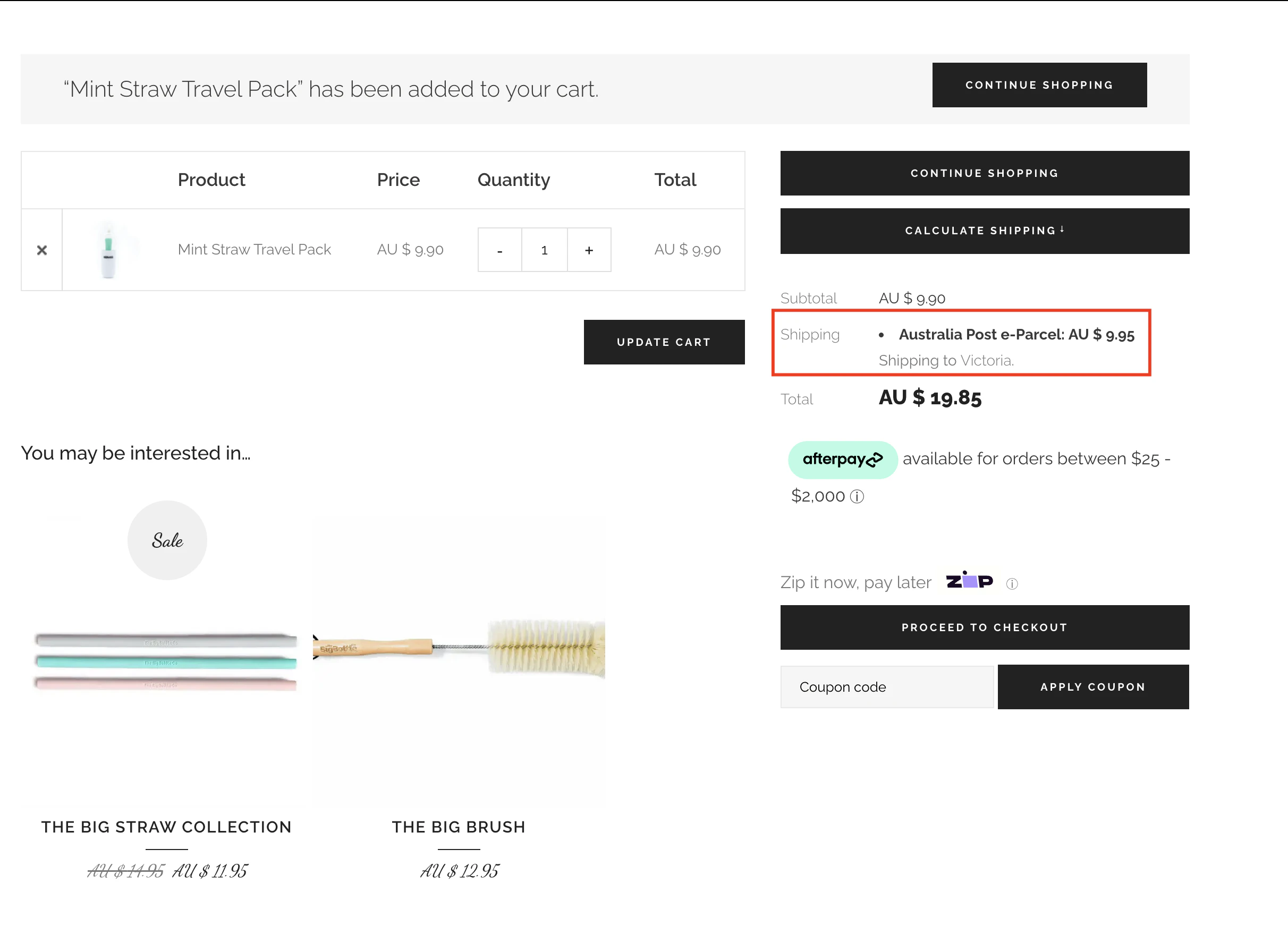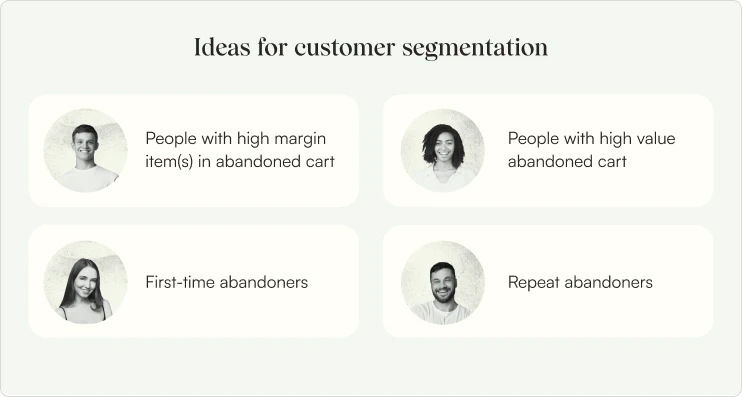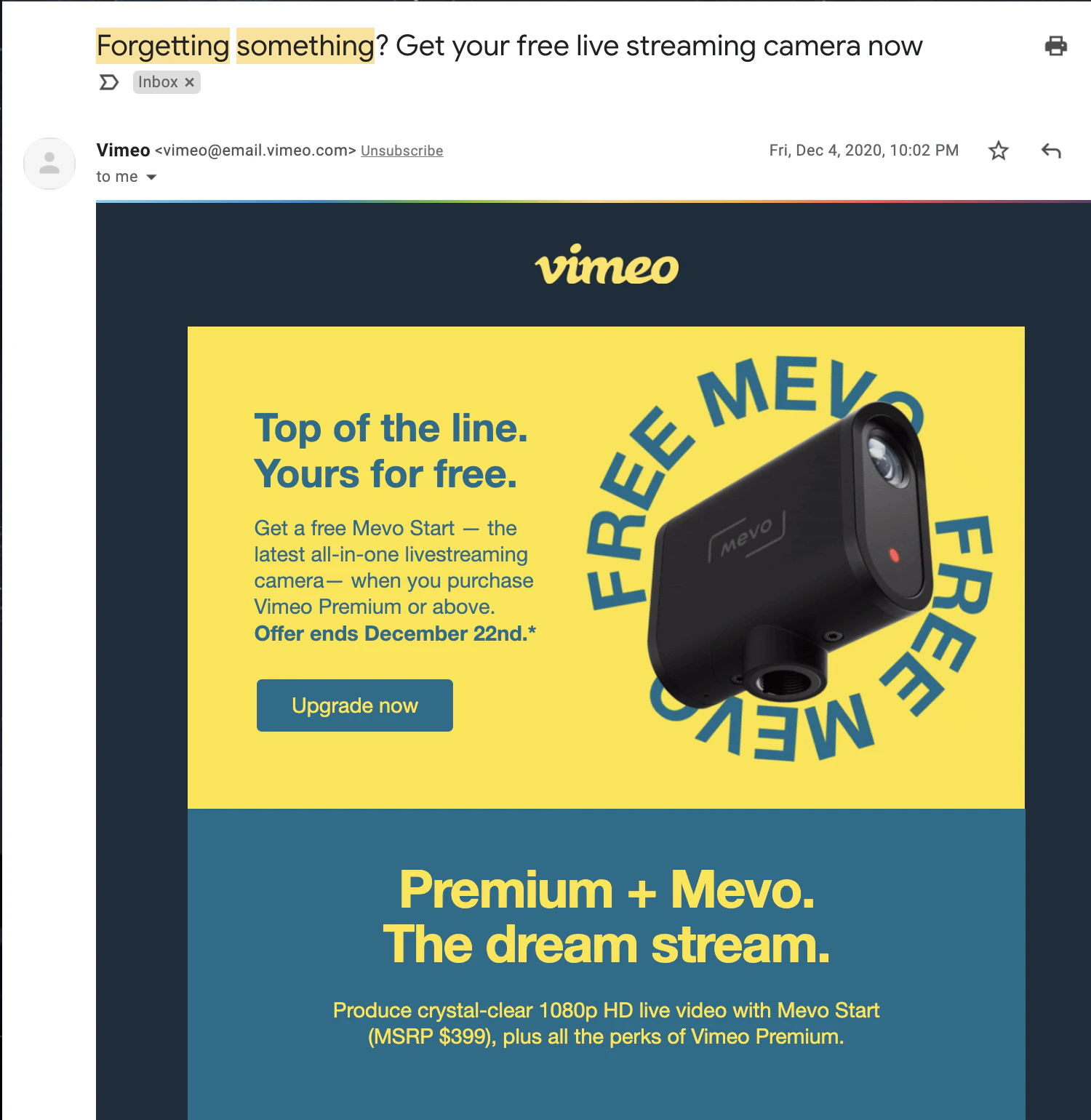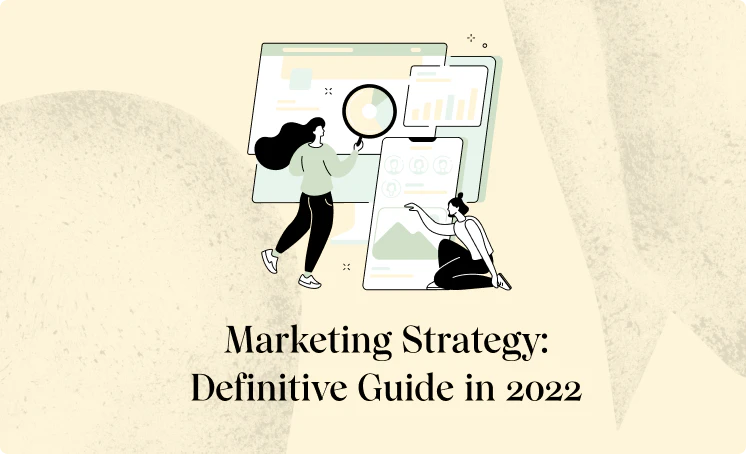Introduction
If you’re an eCommerce business owner, chances are that you’ve seen this happen - a visitor may get onto your website, look around and leave without completing a desired action.
Frustrating? Definitely, and there’s a phrase for this phenomenon too - ‘cart abandonment’.
In most cases, it describes the desertion of a shopping cart when a user includes an item in his or her cart and exits without completing the purchase.
Reasons for abandonment include high extra costs, complex checkout process, slow delivery, website errors, unsatisfactory payment process, and so on. Users are fickle after all - the consequence of these issues is that they may add in items into their cart, get dissatisfied at some stage of the customer experience, and choose to look elsewhere.
For these reasons, businesses send cart abandonment emails to motivate customers to recover their cart. Here’s how this strategy works.
How Do Cart Abandonment Emails Work?
This strategy uses triggered emails sent out following an abandoned cart to motivate a customer to recover the cart and complete their purchase. This strategy works to remind customers of products they left in their cart, enticing them to return and purchase what they were so close to purchasing.
To implement this campaign successfully, a company needs customers’ email addresses. Since most abandoners leave websites without offering any details, strategies are necessary to capture more email addresses from visitors. This includes the optimization of the checkout form, adopting intent popups, and the feature included with the activated email.
The more emails captured, the more campaigns a business can send and the higher the likelihood of recovering more carts. Abandonment email campaigns comprise of numerous triggered emails (most frequently three) sent out at an established time following cart abandonment.
Each email can consist of different messages, discounts, and customized product recommendations. The messages should be personalized with respect to the deserted cart content, and produced in real-time to send an appropriate message to an appropriate shopper at a suitable time.
Delivering a well-timed abandonment email produces an opportunity to continue the conversation with customers who began the checkout process, but opted not to convert for some reason.
The major reason why this customer is so crucial comes down to purchasing intent. Abandoning customers demonstrate a degree of purchasing intent that surpasses site visitors who merely browse a product page or visit your homepage. Cart abandoners signify a crucial source of qualitative information when it comes to uncovering the reason why they abandoned their carts, to begin with.
Factors such as payment mistakes, vague language on the checkout form, or trust issues can cause users to balk before they complete a transaction. Retailers are often so close to the operational constituent of their business that they might forget to experience the purchasing process from a customer’s viewpoint.
Obtain Insight from Abandoners
Obtaining this insight from abandoners allows you to tackle conversion deterrents and website concerns before a user abandons, subsequently enhancing conversion rates. The best way to uncover this insight is to simply ask for it. Generate opportunities for abandoners to engage with you and get their questions answered through the support team.
Ways to obtain insight include:
Observing the Reply-To Inbox
Ideally, abandonment campaigns should come from a live, monitored inbox. This is significant because numerous customers will just respond to a remarketing email to seek clarification or make an inquiry.
Researchers assert that sending an email from a real person’s name can enhance open rates as opposed to sending from a company name. This method is particularly effective for B2B companies with committed account representatives.
Considering Live chat
For customers seeking an instant answer, you might want to direct them where they can engage through live chat. Your customer service representatives should document any questions or objections. Ensure you review the data monthly.
Using Surveys
Surveying abandoners is an efficient tool for collecting qualitative insight into the cause of the abandoned cart. In lieu of sending a campaign that merely seeks to win the sale back, design one that inquires about the abandoned cart.
You could even offer store credit for any client that completes the survey - this is a superb way to generate interest, display your willingness as a business to improve, and nudge an abandoner closer to making a purchase - all at once.
An email marketing strategy isn’t merely about winning conversions back. Delivering this kind of campaign intelligently is a great way of gathering qualitative feedback from customers and determining the reason behind their failure to convert. You can use this insight to enhance your conversion funnel and develop an enhanced purchasing experience for future clients.
Reasons for Shopping Cart Abandonment
Any business considering the set-up of abandoned cart emails should keep in mind that various reasons exist for cart abandonment. While some people are simply unprepared to buy, others face distractions and forget to complete their purchase.
On the same note, several shoppers are price-sensitive and like shopping around for price comparisons or seek better deals. Others, on the other hand, browse through their mobile and plan to purchase through their desktop, but forget.
Sometimes, shoppers simply lack a credit card at the time of purchase, and put it off for later.
These are the most common cart abandonment causes, according to Statista:
- Shipping costs are too expensive (63%)
- Non-functioning discount code (46%)
- It takes a long time to ship the order (36%)
- The need to re-enter shipping information (25%)
- The need to re-enter credit card information (30%)
Shopping cart abandonment is a significant facet of online shopping to which retailers pay keen attention. You calculate the abandonment rate by dividing the number of completed transactions by the number of transactions initiated. This rate will determine the proportion of your site’s purchase intent by including a product in the cart without completing the purchase.
This rate offers a significant metric for ecommerce websites to track since a high abandonment rate could indicate a broken sales funnel or poor user experience. The average online store loses more than 75% of the sales to cart abandonment while some industries experience as high as 83.6% abandonment rate.
Let’s dive a bit deeper into the core reasons behind cart abandonment:
Unanticipated Shipping Cost
Hidden charges are the major reason visitors leave sites without buying, ranking first in impact and profitability. You must pay attention to other hidden charges, for instance, taxes or compulsory complementary items, which have a comparable effect.

Such costs can cause immediate irritation and annoyance. In some instances, some consumers could end up regretting the decision to buy. The clearest solution to elevated shipping expenses is to eliminate them. However, this might not be feasible depending on your product mix.
An excellent strategy is to bundle the extra shipping cost into the item cost itself. If you cannot decrease costs, disclose them fully - the ideal place to do so is on the product page. Beware that transparency isn’t just vital for store success, digital shoppers value it. Therefore, you’re better off stating all expenses from the onset.
Concerns Regarding Payment Security
When you have security concerns, its effect is dramatic. Major sources of suspicion include missing images, outdated layouts, and no SSL certificate - these problems will cause several users to think twice before making a purchase.
Fortunately, various ways exist through which you can enhance website trust. The easiest technique is through different modes of social proof to guarantee customers that your store is trustworthy. This process should be part of product page optimization.
Consider incorporating product reviews, customer testimonials, and use endorsements. You should equally include contact information, for instance, a phone number. You can enhance conversions by developing more trust and creating a strong brand. You might want to enforce a generous return policy to allay client concerns.
Complexity
Online shoppers typically have a short attention span and will leave the checkout flow if it’s time-consuming or too complex. Long and unclear checkout processes give them more time to doubt their purchase - this is why eCommerce giants like Amazon make the process as painless and quick as possible.

Oftentimes, redundant forms generate unease and could even be confusing; all these results in a poor experience, resulting in almost 28% of shoppers abandoning their carts. To address this, decrease form elements and ask only for necessary information.
Moreover, you should streamline your website’s navigation. One way of decreasing the time is by decreasing the screen number from initiation to completion. Avoid this by simplifying the checkout process as much as possible.
Technical Issues
All technology is vulnerable to glitches and technical issues. Make sure you observe your analytics and review the checkout process regularly to ensure there are no show-stopping bugs. You should also make sure you’ve optimized the code on the checkout page to prevent long load times.
High Prices
Web-users frequently do comparison shopping to secure the best deals. You can prevent cart abandonment by issuing coupon codes and special discounts to prevent losing them to competitors.
No Payment Options
Oftentimes, customers have strong preferences of how they’d like to pay and will only complete a purchase if their favored method is offered. Decrease this issue by providing the most popular modes of payment for your target audience, for instance, PayPal.
Browsing
Numerous users who add cart items but don’t complete them are merely browsing with low purchasing intent. You can incentivize them to buy instantly by providing restricted time promos and developing a sense of urgency.
Why You Should Send Abandoned Cart Emails to Site Visitors
These emails allow you to link with those who were previously engaged with your brand and nudge them gently through the checkout line virtually.
Since cart abandonment occurs at a rate of about 70%, these emails should form part of any online business’s email mix - letting them go is tantamount to losing considerable sales figures.
By using an abandoned cart email strategy, you can:
Enhance Conversion Rates
The most apparent benefit of this strategy is enhancing conversion rates and revenue. Sending automated emails allows you to save costs and time while enabling efficiency. These emails allow you to motivate customers to return to the website and complete the purchase.
This can be done by reminding them of the abandoned items, presenting other relevant products, or incentivizing them through offers.
Enhance Customer Relationships
This email campaign allows you to re-engage and interact with a consumer; this helps build a relationship with them. Personalized product recommendations and emails help enhance the significance of your communication with your customers and allow customers to perceive your brand as helpful and significant.
Furthermore, incorporating your brand’s personality into the email campaign permits you to be memorable and unique. These strategies increase brand loyalty and customers’ trust, leading to a higher probability of future purchases.
Understand Why Customers Abandon Carts
There could be various reasons why a customer went through the whole process only to walk away, including high shipping expenses. Sending emails helps you assess your metrics to determine whether you should make website enhancements to enhance your sales.
Enhance Brand Awareness
Although the goal of abandonment emails is to motivate a customer to purchase an item, the email could still enhance brand awareness even if it doesn’t yield a sale. Customers will view and read the subject line and probably open the email. Both actions will keep your brand on top of their minds.
Consequently, they’ll recall your business name the next time they need a service or product your business provides.
The Most Common Mistakes in Cart Abandonment Email Campaigns
If you run an online store, you probably know that implementing an abandonment email campaign doesn’t guarantee conversion. You must implement your email campaign appropriately to persuade lost shoppers to return and complete their purchase. Here’s a list of mistakes that probably cost you conversions and how to eradicate them.
Timing
Timing is crucial. It might surprise you to learn that the most finely developed emails might remain unopened if sent at the wrong time. Sending retrieval messages in real-time to abandoners is vital in recovering lost sales.
There’s no ideal time to send a recovery email, it simply depends on the ticket size and nature of the product. For instance, if you’re in the business of dealing with products that need minimal research such as grocery items, you could send the email within one hour after abandonment.
However, if you deal with items such as jewelry or mobile phones that typically need more research, you can send the email within the initial 24 hours.
The time between when a shopper abandons a shopping cart and obtains your reminder email plays a role in cart recovery. If you send it too early, they’ll ignore it and find it pushy, if there’s too much gap, they’ll purchase it elsewhere or forget about it.
You should test constantly and measure to determine the perfect time gap. Don’t merely base your timing on industry research. You’ll want to test various timings to determine the ideal one for your products or services.
Sending One Email
If you’re only sending one email, you’re missing out on opportunities for conversions. Researchers assert that campaigns that send three emails experience 26% higher conversion than those that send one email. Sending more than one reminder increases your likelihood of getting noticed.
Like any marketing strategy, adopting a thoughtful approach to your campaign strategy will enhance your conversion rate. It’s worth noting that the tone of your recovery emails should be more customer-service oriented rather than constantly making a hard sell. For instance, you could ask whether the customer experienced any difficulty while ordering - showing them that you care about their needs and wants.
Using the Same Message to Target All Cart Abandoners
You should segment your cart abandoners, so you can recognize them. For instance, you can produce a different segment of new subscribers or loyal customers who’ve abandoned their cart. This way, you’ll determine what to send in your email instead of blasting the same email to everybody.

With this in mind, not everyone who abandons a shopping cart will obtain a discount. Rather, discounts can help prod a price-conscious shopper to purchase an item. However, if a customer is doing last-minute festival shopping, an express shipping offer might induce the shopper to complete a purchase - make offers contextual and you’ll see better results.
‘Abandoned Cart Subject Lines Are Essential’ - The Data
A subject line is the first thing you see as an email recipient, helping you make a call on whether the email is worth opening or not - it summarizes what the message is about. While your email’s subject line might seem trivial, it could break or make your open rate and affect your capacity to convert casual visitors into customers.
Think about it; even if you scrutinize and polish every detail of your email from start to finish but it doesn’t get opened, your efforts won’t pay off.
Carefully penned subject lines are necessary for eCommerce businesses because they play a significant role in increasing sales and converting customers. When crafting a subject line, you must identify your audience, keep abreast of spam trigger terms, and stand out among countless emails in a consumer’s inbox.
Subject lines have a direct association with email open rates. This means that they could make or break your endeavors for customer conversion. Typically, people get overwhelmed with notifications and messages, ranging from work emails to social media notifications and personal emails - the average user is buried under over 60 notifications per day on just their smartphones.
That’s why you must find a way of making your email stand out from the crowd.
You want to ensure that your email doesn’t get lost or ignored among the countless ones in a consumer’s inbox. That’s where the subject line comes in. According to research, subject lines which remind somebody that they left an item behind typically perform best. Such emails generate a higher open rate (47.67%) while emails featuring emojis in the subject lines generate a somewhat lower performance (39.09%). Nonetheless, you could still determine whether emojis suit your audience.
When it comes to subject lines featuring discounts - whether with a dollar sign or percentage, these have a lower open rate (38.31%), but an average click rate of about 11%.
Subject lines work to pique shoppers’ interest, attract shoppers, and induce them to click an email to learn more. These statistics demonstrate the value of efficient subject lines:
• 47% of email recipients open emails depending on the subject line
• In 2020, abandoned cart emails generated a 40% open rate, signifying that shoppers have a higher likelihood of opening emails with abandoned cart subject lines than ordinary marketing emails, which generated a 12% open rate on average
How Abandoned Cart Email Subject Lines Affect Open Rates
Subject lines have a direct influence on open rates. Therefore, they determine whether you'll be able to convert lost shoppers.
You can increase open rates in various ways, for instance, the tone. That is, a friendly and conversational tone helps you display the human side of your email. That is, adding some personalization to your email is an excellent means of boosting click-through and open rates.
A subject line is an initial thing your client sees, so it might be the only chance to draw their attention. Your subject line should incorporate these features to better attract your audience:
Clarity
It's easy to get carried away trying to craft a distinct, fascinating subject line that will pique your target audience's interest. However, you must remember that the whole point of the subject lines is to inform subscribers about the nature of the email.
Stats show that the more descriptive the subject line, the higher the open rate. Therefore, you'll have to avoid vague subject lines. Instead, it should be clear that you're sending a reminder for somebody to checkout or that you're issuing a special offer to persuade them to return.
Brevity
When crafting subject lines, there's a small amount of space to work with before clients begin to lose interest. This is particularly true as people read most emails on mobile devices - a platform that encourages shorter attention spans. As a result, you’ll find that your subscribers will typically favor shorter subject lines that get straight to the point.
A study discovered that having between 4 and 15 characters attains the highest open rates while more than 50 characters produce a low open rate.
Personalization
Personalized emails produce over a 50% increase in client satisfaction along with a 30% higher open rate. The most apparent means of personalizing subject lines is to include your subscriber's name. In particular, you should include the name of the abandoned item.
Remember, no two subscribers are similar and at times, the sent emails shouldn't be either. When sending content, ensure it's geared toward the individual.
Seven Tips to Create Abandoned Email Cart Subject Line Copy That Converts
Maintain Simple Subject Lines
You must remember the objective of your subject line. The whole point is to get consumers to open your email. When competing for consumer attention, your messages shouldn't merely be compelling. They should equally be simple and straight to the point.
Maintain a Short Subject Line
If you don't want your subject line cut off, it shouldn't be too long, especially on mobile devices. This means that the subject line should be less than 50 characters to ensure those scanning your emails read the subject line entirely. If you're struggling to maintain short subject lines, consider words that matter less and where you can omit frivolous details.

Personalize the Message
These days, shoppers demand more from brands. People don't have to tolerate impersonal businesses. Instead, they have more choice and increasingly opt for genuine brands that offer value and seem relatable. Personalization goes a long way toward building relationships that yield long-term value for you and your clients.
Incorporating your client's first name in the subject line allows you to engage directly with them and give them a unique brand experience.
Make Compelling Subject Lines
Compelling doesn’t necessarily mean terms such as ‘Big Sale’. Such terms can be construed as aggressive or pushy by many people. Instead, a compelling offer gives somebody grounds to open your email and purchase from your brand - this is where you play to your strengths.
Remember, you don’t always need to issue a discount to make an offer compelling. You can generate compelling offers by highlighting your products’ quality, emphasizing the ease of purchasing through your website.
It’s also an opportunity to demonstrate the uniqueness of your website or create a sense that somebody might miss out if he or she doesn’t open your email.
Create Curiosity
Communicating scarcity and urgency in an email subject line can persuade readers to click when phrased strategically and creatively. Just make sure you use the subject lines sparingly and try to restrict them to when the situation calls for instant action genuinely.
Make Visually Interesting Subject Lines
The last thing you want is to create a subject line that readers consider an eyesore. For instance, you want to avoid using an aggressive tone or overused signs.
If you have to use exclamation points, make sure you use them carefully. When used appropriately, exclamation points can communicate excitement and spur action.
Research conducted by Klaviyo discovered that subject lines with one exclamation point yielded a somewhat higher than the average open rate (42.35%) but those that used more than one exclamation point saw their rates plunge to 36%.
Beware that excess exclamation points can elicit spam filters and affect your email deliverability. You’re better off with one if you want to convey excitement and urgency.
Types of Abandoned Cart Email Subject Lines (With Examples)
Compelling Offers
Issuing some kind of incentive is an efficient means of encouraging people to complete a purchase, especially with first-time customers. If the recipient is a previous customer, it might not be necessary to issue a discount with your first email.
For first-time clients, it might be more efficient to incorporate a free-shipping offer or a certain proportion off their initial order. Numerous brands do this with a particular time restriction - giving users a few hours to make their purchase, so that they take action sooner rather than later.
- Take XX% off your cart before it’s gone!
- Here’s $XX on us.
- Hey [Name], how about XX% off?
- Hey, forgot something? Here’s XX% off on [Product]!
Product Shout-Out
Recognition and consistency are efficient motivators to complete purchases. These subject lines leverage this to the fullest. They’re direct and resurface the need or want a customer had initially when he or she placed the item in the cart.
• Still deciding? Your [Product] is waiting for you.
• [Product] can be yours today - shipping and returns are free!
• Looking to [Product function]? We’ve got the best [Product] you can find!
• [Product] might be the one - click here for great deals.
Suggestive Subject Lines
These lines frequently use the ‘Assumption Principle’, which works by presuming the consumer has decided to complete a purchase. That is, it infers that the reason why a customer deserted his or her cart is that he or she forgot rather than other issues, for instance, shipping, costs, or determining a better alternative.
• Oops - were you looking to purchase [Product]?
• Forgetting something?
• [Name], looks like you dropped something!
• Looks like you forgot something - complete your purchase here

Customer Service Subject Lines
These lines try to solve a customer’s issues for not completing their transactions. These subject lines oftentimes open a conversation with a basic question, for instance, “Was there an issue with your order?” These lines help you determine the nature of the problem that results in cart abandonment.
• Can we help?
• Looking for [Product]? We’re here for you.
• Issue with your [Product] purchase? Let us help.
• Confused about [Product]? Ask us for advice!
Brand Personality
You don’t have to make an offer in the heading to get your email opened. You’ll discover that human-centered subject lines are efficient.
Brand personality subject lines center on establishing the form of relationship you seek with your customer. These lines often use humor to imitate a real conversation. If you adopt this route, ensure that you maintain a consistent tone throughout your customer interactions.
• Beauty: Keep your summer glow with free shipping!
• Fashion: [Name], stay in style with the items in your cart!
• Home: Don’t be left in the dust. Scoop up XX% off items in your cart!
• Garden: Plant today, grow tomorrow with items in your cart.
Personalized Lines
Incorporating personalization elements such as location or name adds a sense of rapport, particularly when it’s a name. Everybody loves how their names sound. Furthermore, it enhances the click-through rate. Research reveals that emails with the first name of the recipient in the subject line have a higher click-through rate than those without one.
• [Name], did you like the jeans you were checking out?
• Still deciding, [Name]?
• [Name], get your new jeans in time for the weekend!
• You left some super comfy jeans behind…
Friendly Subject Lines
Customers don’t always welcome the hard sell. Just being nice is an excellent way of engaging prospects on an individual level. These lines establish an association that isn’t transactional-based. Rather, they adopt a friendly approach.
• You’re so close!
• Oh no! You left something behind.
• Your cart misses you!
• Hey there - let’s help you get some [Product]!
A/B Test Your Abandoned Cart Emails
Abandoned cart emails allow you to generate more income. Once you’ve determined the strategies needed to create copy that converts and the subject lines you can A/B test, you can experiment to establish the messages that will resonate best with your target audience.
A/B tests offer a simple yet efficient means of getting some data that suits your brand. You just need to generate two versions of your email component, for instance, the subject line, and test them against each other to establish what works best.
When designing your test, you should test one component at a time. Three ways to test your emails include: testing your subject lines; testing the number of emails you send; and testing the timing.
Final Thoughts
When it comes to eCommerce, abandoned carts are the bane of online retailing worldwide. You’ll discover the statistics behind this issue are unbelievable. For every customer who makes an online purchase, an average of two people are including items to their cart without checking out.
This 2:1 ratio leaves millions of products left in shopping carts online every year.
Fortunately, you can recover a sizable portion with automated emails. If you don’t know where to start, this comprehensive guide offers insight into how to craft effective emails to decrease cart abandonment and increase sales.














.webp)

.webp)








.webp)









































.webp)






